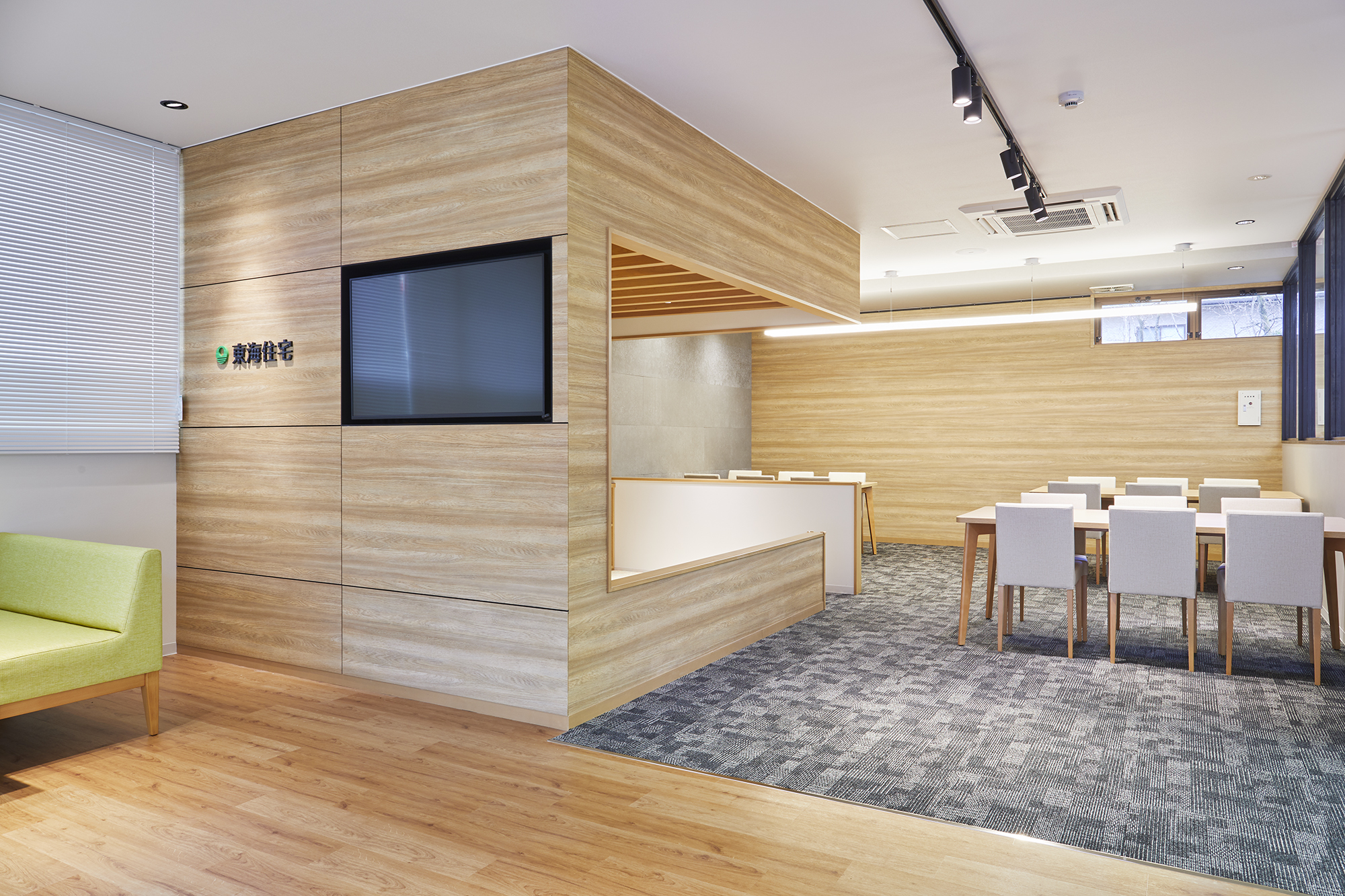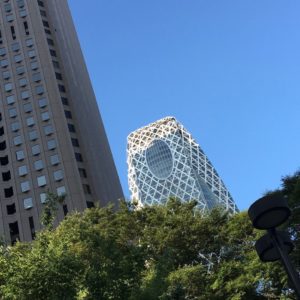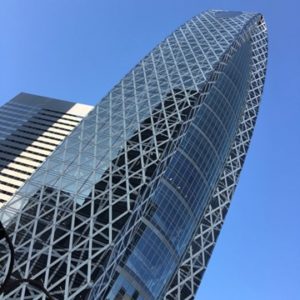
By Guest Blogger Brent Williams
Because of my work with applied architectural surface finishes, I’ve been blessed to have traveled to Japan and work with the industry there at all levels. The culture surrounding the product and its integration into the design industry totally blew my mind – in a good way. From an architectural standpoint, I was captivated with their progressive design and construction concepts. What I found most impressive was the desire to constantly seek change and progress in every aspect of design and culture.
Across the design spectrum, from interior design, architecture and industrial design to technology industries like electronics and photography, the Japanese relentlessly pursue innovation. In the retail environment, shop managers frequently are known to upgrade their store’s interior design annually. That’s right, every year, popular department stores re-envision the interior look and finishes of their stores. Moreover, their clientele expects to see those upgrades on a regular basis.
Tokyo
Japan is a country where art and technology frequently collide with a bit of tongue and cheek. Their minds are constantly desiring visual stimulation in a manner that creates an almost mystical environment for everyday life. Nowhere was this more evident than in an interaction I had with a spectacular architectural specimen just outside of Tokyo.
When I first visited Shinjuku City, a major suburb of Tokyo, I was visually drawn to an astounding building as soon as I’d stepped off of the train. This building has what is known as an exoskeleton… the structural elements of the building are predominantly on the exterior of the building envelope. As soon as I saw the structure, I knew I needed to see it up close.
As I crossed the city to garner a closer look, I was mesmerized by the myriad of visuals that I encountered along the way. Traditional geisha fashion from centuries past walked alongside the latest harajuku fashions that appeared to have stepped out of an Alice in Wonderland sketch. It was both inspiring and mind-boggling.

The building that caught my eye
As I eventually approached this miracle of a building that had captured my attention, I couldn’t help but catch my breath…and chuckle a little.
At the base of the building, the Tokyo Mode Gakuen, my design mind was smacked squarely in the face. The building itself is a multi-disciplinary school for art, fashion, technology and medicine, so it is totally appropriate that the structure itself was so visually and viscerally stunning.

A close-up
But… smack dab in front of this glorious display of architectural prowess was a set of temporary guard rails to keep pedestrians off of the busy street… and these rails had stanchions that were designed to look like “Hello Kitty”. The blur of functionality and styles fully conveyed the Japanese culture’s ability to meet their own needs, and even whimsical in a way that was all their own. They weren’t consumed with the standards of yesteryear or held to traditions in the typical sense, instead, whimsy is a daily part of life.

The Japanese have become famous for aligning their spiritual and cultural practices alongside modern style and efficiency. Their daily priorities circulate around innovation and efficiency. And I have to admit, it’s an incredibly interesting place to study the human/design interface.
Is 3M™ DI-NOC™ Feng Shui?
Although traditionally Chinese, Feng Shui is strongly integrated into Japanese culture as well. Known as Fusui (roughly translated “wind-water”) the Japanese form of practice incorporates wood, water, and metal into living and office spaces in specific orientations that ensure that you have a proportional amount of the earth’s major elements represented. Why does this matter? The belief is that this orientation keeps the flow of energy moving throughout your space, thus your life doesn’t become stagnant.
Wood finishes in particular are ubiquitous in Japanese culture because these earth “elements” have strong spiritual and emotional significance. Wood in particular represents wind and thus, supports the flow of oxygen. Because it is so expensive and unresourceful to fabricate and deploy real wood elements, the Japanese culture has adapted the use of DINOC architectural films on all forms of interior and exterior surfaces. This use of a natural appearing finish supports the cultural need for change and evolution without great expense or life disturbance. These finishes are applied in a single day, often within mere hours. It’s an efficient use of time and space and doesn’t require interruption of daily rituals for weeks on end. For these reasons, DINOC architectural finishes marry well into Japanese culture and expectations.
A Japanese Passion for design
As someone who works with designers extensively, Japan’s take on architectural finishes is refreshing. They look at these finishes as a way to incorporate the latest style, quickly, cleanly and affordably – all while avoiding adding mass to their landfills. Customarily, they do not readily throw out cabinetry as we do here in the States when remodeling. Instead, they tend to refresh repeatedly… approximately every three years residentially. Because they refrain from buying furnishings and merely refinish walls or cabinetry, they can afford to upgrade more often. Using DI-NOC architectural films for a redesign provides them the perk of the latest look without overspending on the costly and environmentally inefficient practice of replacing everything.
Interestingly, Japan was the first culture to fully embrace architectural finishes when they were being popularized in the 1960’s. While the product was used extensively on automobiles in the United States starting in the 1950’s, the Japanese design industry realized that the product was a perfect fit for the refinish industry and started innovating by adapting this product to both interior and exterior spaces. The product has become such a staple in design markets that they moved the manufacturer of the product to Japan to facilitate growth of the industry. Today, Japan uses more DINOC than the rest of the world combined.
Bringing it home
Here in the US, with our plentiful supplies of natural resources and history of using traditional finish methods, it took far longer to be embraced by designers. Thus, the process of adapting to these revolutionary finishes is ongoing.
Because our physical spaces are larger here in the U.S., I have great hopes that we, as a culture, will see benefits of implementing DI-NOC™ in interior design more extensively moving forward. It is a common-sense solution that uses little energy to produce and doesn’t tap out our natural resources, all while preventing landfilling of perfectly good interior elements. Upgrading interiors every few years versus a complete overhaul every decade or two will be immensely attractive to the design-conscious business owner who wants to stay in the style-zone.
By innovating an American creation, the Japanese have led the way in adapting a product from the automotive industry into a robust and logical materiality choice when rapid, clean and inexpensive surface finishes are required. Anyone involved in the domestic architectural finish world should appreciate the passion and vision that Japanese culture has brought to the industry by innovating DI-NOC. Afterall, it takes two to tango. Wait … that’s Argentinian.
If you are interested in instruction on DINOC architectural finishes watch our webinar with Chain Store Age Magazine. It’s an incredible product that provides stunning finishes to your space. You may end up dancing a to a new tune yourself!


